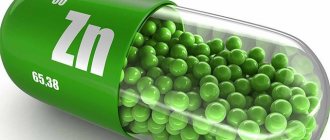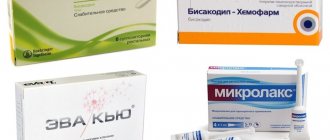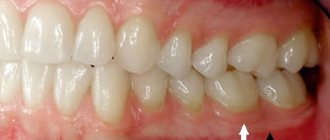Biological role
- is a component of many enzymes with redox activity
- participates in iron metabolism
- increases the absorption of proteins and carbohydrates
- takes part in providing tissues with oxygen
- participates in the formation of connective tissue, bone growth
- supports the structure of bones, cartilage, tendons
- maintains the elasticity of the walls of blood vessels, alveoli, skin
- has a pronounced anti-inflammatory property, incl. for autoimmune diseases (for example, rheumatoid arthritis)
- participates in the formation of hemoglobin and maturation of red blood cells
Copper is an essential trace element needed by the body for a number of functions - from the formation of bones and connective tissue to the production of specific enzymes. Copper is present in all tissues of the body, but its main reserves are in the liver, less in the brain, heart, kidneys and muscles. Although copper is the third most abundant trace element in the human body after iron and zinc, it is only contained in the body about 75–100 mg.
About 90% of copper in the blood is found in compounds that transport iron to tissues and also act as enzymes that accelerate its oxidation, that is, its processing and absorption. This is why very often symptoms of iron deficiency (for example, low hemoglobin) actually mean copper deficiency.
In addition, copper is a component of an enzyme that is involved in the synthesis of collagen and elastin, two important proteins found in bones and connective tissues.
Copper deficiency is also often to blame for early aging, increased fatigue, and increased cholesterol. Therefore, you need to make sure that there is copper in the food products on the table. The daily requirement of an adult is 2-3 mg per day. When calculating, you need to take into account that only 10-15% of the macronutrient is absorbed, and it is better to postpone dairy products for another meal.
Useful copper salts are found in medicinal herbs: wormwood, yarrow, oregano, St. John's wort.
The amount of copper required for the body can be found in peas, nuts, beans, cocoa, chanterelles, boletus, porcini mushrooms, buckwheat, oatmeal, lemons, black and whole grain wheat bread.
As in humans, in animals most of the copper accumulates in the liver. It is not surprising that this by-product is preferable in case of macronutrient deficiency. The champion in copper content is beef liver - 14.3 mg per 100 g of product. This is followed by cod liver - 12.5 mg. In order for copper to be absorbed from the liver, it must be cooked without sour cream. Casein makes it difficult to absorb macronutrients. You should also not combine the dish with alcohol or eggs.
Seafood is a valuable source of the chemical element. Among the leaders in substance content are oysters (4.4 mg), squid (2.1 mg), and lobster (1.9 mg).
Be sure to include nuts and seeds in your diet; they are a source of energy containing fatty acids, vitamins, calcium, zinc and iron. Fresh and dried nuts are the most useful; when fried, they become too high in calories and contain fewer nutrients. Cashews have the highest concentration of copper (2.2 mg), followed by hazelnuts and Brazil nuts (1.8 mg). There are 1.6 mg in walnuts, 1.3 mg in pine nuts and pistachios. Sesame seeds are rich in copper: one tablespoon will fill half the daily requirement. You don’t have to eat them dry: you can add sesame seeds to a salad, vegetable dish, or as a topping for baking.
Porridges are useful because they contain slow carbohydrates. The presence of copper in cereals is an additional, very good bonus. Its content in buckwheat is 0.7 mg, in rice porridge - 0.5 mg. Pasta, depending on the type of wheat, also contains about 0.8 mg per 100 g of product.
Among vegetables, fruits and herbs, the richest in macronutrients are garlic (0.3 mg), dried figs and prunes (0.28 mg). The figure for basil is even higher (0.38 mg). Since you can’t eat a lot of garlic and herbs, preference is usually given to dried fruits.
Cocoa powder contains copper in the amount of 0.38 mg. To provide the body with copper, it is enough to drink a cup of cocoa in the morning or eat a square of dark chocolate.
Cooking does not harm copper. However, it will not be absorbed by the human body if it is consumed simultaneously with dairy products: milk protein, casein, prevents copper from being absorbed.
However, consuming large amounts of copper salts in food causes toxic effects. Therefore, in some food products and water, the copper content is regulated by regulatory documents: Technical Regulations of the Customs Union TR CU 021/2011 “On the Safety of Food Products” and TR EAEU 044/2017 Technical Regulations of the Eurasian Economic Union “On the Safety of Packaged Drinking Water, Including Natural Mineral Water "
According to TR CU 021/2011, control of copper content is carried out in vegetable oils (all types), margarines and vegetable-cream spreads.
In the food product research department, testing samples are tested to determine the mass concentration of copper using the stripping voltammetric method in accordance with GOST 33824-2016 “Food products and food raw materials. Stripping voltammetric method for determining the content of toxic elements (cadmium, lead, copper and zinc)" and GOST 31866-2012 "Drinking water. Determination of element content by stripping voltammetry."
Over the 9 months of 2021, 93 studies were carried out in water, vegetable oil and spread, as well as 50 studies in samples of ice cream, poultry meat, poultry by-products, eggs and egg powder, planned for export to countries where copper content is controlled by regulatory documents .
Copper deficiency
Copper deficiency is rare.
Causes of copper deficiency
- insufficient intake of copper from food and water
- copper metabolism disorder
- diseases of the gastrointestinal tract (lead to malabsorption)
- long-term use of medications (corticosteroids, non-steroidal anti-inflammatory drugs, antacids)
Consequences of copper deficiency
- impaired iron absorption with the development of anemia
- leukopenia and neutropenia in the blood picture
- damage to the cardiovascular system (formation of blood vessel aneurysms, cardiopathy)
- impaired bone mineralization (frequent fractures, osteoporosis)
- decreased immunity
- development of multiple sclerosis
- hypothyroidism (low thyroid function, goiter)
- disorder of skin and hair pigmentation
- delayed sexual development in girls, menstrual dysfunction, infertility
- distress syndrome in newborns
How to find out which microelements are missing in the body? / "www.inthecity.ru"
Return to list
When choosing a vitamin-mineral complex at the pharmacy, we first of all pay attention to how much vitamins C, B and E it contains as a percentage of the daily value. We usually ignore the inscription informing about the content of zinc, magnesium, selenium and phosphorus in the preparation. Yes, we know that it is good for the body. But who wants to remember school chemistry?
Meanwhile, there are 86 microelements in the human body. Some of them are called structural, since they make up 99% of the elemental composition of the human body. These include: carbon, oxygen, hydrogen, nitrogen, calcium, magnesium, sodium, potassium, chlorine, phosphorus, sulfur, iron. The growth, development and health of the body directly depend on the amount of minerals: they affect hematopoiesis, bone formation, absorption processes in the intestines, are responsible for the acid-base balance, perform the function of nerve conduction, intracellular respiration and much more.
Unfortunately, living in the city, we receive not only useful microelements. Our health is at risk from the accumulation of heavy metals that cause intoxication, or, more simply, poisoning. Symptoms of the accumulation of mercury, lead, arsenic, cadmium, nickel are weakness, sleep and appetite disturbances, irritability, dull skin and hair, broken nails and, of course, memory deterioration, concentration decreases, and vision deteriorates. Tatyana Semenchenya, a doctor at the independent INVITRO laboratory, talks about the role of each element in the human body.
Copper
The largest amounts of copper are found in the liver, kidneys, heart and brain. And this microelement is excreted mainly with bile. Copper poisoning when it is contained in excess in water or food products and enters the body in large quantities is accompanied by nausea, vomiting, diarrhea, which can lead to the development of hemolytic anemia, renal and liver failure, and neurological disorders. Copper deficiency can lead to anemia and, in premature babies, to delayed psychomotor development.
Selenium
The role of selenium is not yet fully understood, however, it is believed that selenium has an antioxidant effect on the body, slowing down aging. Stimulates the production of collagen in the skin to maintain elasticity and helps eliminate dandruff.
In combination with vitamin E, selenium participates in the processes of reproduction, development of a young body and in a certain way affects life expectancy. When it is deficient, arsenic and cadmium accumulate in the body and calcium levels decrease. Selenium supports the functioning of the immune system. It can also reduce the likelihood of developing cancer.
Zinc
Foods that contain zinc are cereal grains, legumes, cocoa, seafood, mushrooms, onions, potatoes, and cow's milk. Zinc affects the hormonal levels of the body, is responsible for puberty, and affects fat, protein and carbohydrate metabolism. It is believed that zinc has a lipotropic effect, that is, it is able to break down fat cells.
It is also necessary to remember about a possible excess of this substance in the body, which can lead to growth retardation. A lack of zinc contributes to overexcitation of the nervous system, rapid fatigue, hair loss, and threatens infertility.
Iodine
A unique substance that is part of all plants. Iodine deficiency can lead to serious diseases - and this is not only thyroid disease, as is commonly believed, but also the development of mental retardation - cretinism - precisely in childhood! If there is a lack of iodine, the child stops growing and the entire structure of the body changes.
Excess iodine is characterized by sweating, irritability, tachycardia (rapid heartbeat), a person loses weight, a tendency to diarrhea, and exophthalmos (bulging eyes). This trace element is found in kelp (brown seaweed), onions, all seafood, as well as in vegetables grown in soil rich in iodine.
Potassium
Potassium is necessary for the human body for mental clarity, concentration, and also for getting rid of toxins. The main symptoms of potassium deficiency are delayed puberty, slow growth; with severe potassium deficiency, convulsions and cardiac dysfunction are possible. Potassium is found in tomatoes, bananas, potatoes, sunflower seeds, and citrus fruits.
Calcium
With a lack of calcium, tachycardia, arrhythmia (heart rhythm disturbance), muscle pain, constipation, whitening of fingers and toes, increased irritability, dullness, memory loss, decreased vision, broken nails, and hair loss are observed. Excess calcium is accompanied by muscle weakness, difficulty coordinating movements, bone deformation, nausea, vomiting, and frequent urination. Also, excess calcium can lead to a deficiency of zinc and phosphorus.
Calcium is contained in both plant and animal foods in the form of insoluble salts; their absorption into the intestines practically does not occur. Calcium metabolism is regulated by the parathyroid glands.
Magnesium
Magnesium is an essential component of all cells and tissues, including brain tissue. Participates in the process of neuromuscular excitability and is part of enzymes. Enters the body with water, food and salt. Found in large quantities in plant foods - almonds, dark green vegetables, bananas, nuts, figs.
With magnesium deficiency, symptoms of nervous system excitation, including seizures, are observed. A decrease in magnesium concentration leads to excess calcium and phosphorus deficiency. Phosphorus
Phosphorus plays an important role in all processes of our body and is involved in the construction of numerous enzymes responsible for cell life. And its salts make up the tissue of our skeleton.
With phosphorus deficiency, changes in bone and muscle tissue, memory loss, fatigue, and irritability are noted. With an excess of phosphorus, acute poisoning occurs, abdominal pain, vomiting are observed; an excess of this element can lead to death.
What to do?
If a person does not suffer from chronic diseases, monitors his diet, plays sports, spends enough time outside the city, in the fresh air, the likelihood of an acute shortage of any vitamins and minerals is small.
If any problems arise (even if it is “just” increased fatigue, irritability, sleep disturbances) or when planning large loads on the body (for example, pregnancy), it would be useful to undergo an analysis to determine microelements in the blood. Using this analysis, you can assess the state of the body in terms of resistance to chronic, endocrinological diseases, stress, and determine the deficiency of certain substances in the body.
It is recommended to do this analysis:
- children and rapidly growing teenagers
- To old people
- those planning pregnancy, pregnant women and nursing mothers
- people with chronic diseases, diseases of the endocrine system, suffering from intestinal dysbiosis, and those who often catch colds
- girls who are passionate about diets
- workaholics who work 24 hours a day
- living in unfavorable ecological zones
Where to get tested
Network of laboratories "INVITRO"
Analysis can be done on blood, hair and nails.
Examination “ME Profile 1” (main vital microelements: selenium, copper, zinc) - 990 rub. Adding other microelements - 200 rub. for every.
The analysis period is up to 6 working days.
Excess copper
Causes of excess copper
- excessive intake from food, water or from the environment (in hazardous industries, when using copper utensils, poisoning due to careless handling of copper-containing household preparations)
- dysregulation of copper metabolism
Consequences of excess copper (as a rule, only acute poisoning is observed)
- dyspepsia (abdominal pain, nausea, dizziness, vomiting and diarrhea)
- headache, tachycardia, difficulty breathing
- hemolytic anemia, hematuria, massive gastrointestinal bleeding, liver and kidney failure
- central nervous system disorders (memory impairment, insomnia, depression)
- manifestations of the so-called “copper fever” (high temperature, chills, drenching sweats, convulsions)
- accumulation of copper in brain tissue, skin, liver, pancreas and myocardium
Serum copper (Cu) level testing
Copper is a vital trace element that plays a significant role in the synthesis of hemoglobin and the activation of respiratory chain enzymes. It is part of bones, cartilage, connective tissue and myelin sheaths.
Units
μg/L (micrograms per liter).
What biomaterial can be used for research?
Venous blood.
How to properly prepare for research?
- Do not eat for 2-3 hours before the test; you can drink clean still water.
- Do not smoke for 30 minutes before the test.
General information about the study
Copper is an important cation found in many enzymes.
The main sources of copper for humans are food products such as nuts, chocolate, mushrooms, liver, cereals and dried fruits, and water if it has been in contact with copper-containing items (for example, copper-containing utensils). After entering the gastrointestinal tract, copper is absorbed in the small intestine and, combining with blood proteins, is transported to the liver. Its excess with bile is removed from the body with feces and urine.
Copper deficiency, as well as its excess, are rare pathological conditions. More often there is an oversaturation of the body with copper, associated with a violation of its metabolism, or chronic poisoning. A hereditary disease that leads to increased copper deposition in body tissues is called Wilson-Konovalov disease. Its main symptoms are:
- anemia
- nausea, vomiting
- stomach ache
- jaundice
- increased fatigue
- sudden mood changes
- trembling of limbs
- swallowing disorder
- unsteady gait
- dystonia
- the appearance of a specific color of the iris of the eyes
If the kidneys are involved in the pathological process, urine formation may be impaired, leading to anuria. Some of these symptoms sometimes also appear in acute or chronic copper poisoning, which occurs due to environmental pollution, as well as due to liver diseases that interfere with the metabolism of the trace element.
Copper deficiency can occur suddenly in people suffering from diseases that cause severe malabsorption (cystic fibrosis, celiac disease). These diseases are accompanied by neutropenia, osteoporosis and microcytic anemia.
An insufficient amount of copper in the blood threatens the production of defective red blood cells with a low life expectancy, as well as a decrease in the activity of enzymes containing this microelement.
What is the research used for?
- To diagnose Wilson-Konovalov disease (usually in conjunction with a ceruloplasmin test).
- To assess the patient's condition in cases of suspected copper poisoning, as well as copper deficiency or disorders affecting copper metabolism (together with a ceruloplasmin test).
What do the results mean?
Reference values
For men: 700 - 1400 mcg/l.
For women: 800 - 1550 mcg/l.
Reasons for increased copper levels:
- intravenous administration of copper-containing solutions,
- use of oral contraceptives,
- primary biliary cirrhosis,
- chronic inflammatory diseases (rheumatoid arthritis, systemic lupus erythematosus),
- hemochromatosis,
- hyperthyroidism,
- hypothyroidism,
- leukemia,
- lymphoma,
- anemia (pernicious, iron deficiency, aplastic).
Reasons for decreased copper levels:
- Menkes disease ("curly hair disease"),
- Wilson–Konovalov disease (hepatolenticular degeneration),
- diseases of the gastrointestinal tract (sprue, celiac disease, lesions of the small intestine),
- kidney and liver diseases,
- long period of enteral nutrition,
- kwashiorkor,
- cystic fibrosis,
- collagen metabolism disorders,
- primary osteoporosis,
- sarcoidosis
The results of the study should be assessed in conjunction with the analysis for ceruloplasmin and clinical data. An isolated increase in copper concentration in the blood does not confirm the presence of the disease, but only indicates the need for further clinical search.
What can influence the result?
- Copper levels increase during pregnancy and during the period of taking estrogens and oral contraceptives.
- The drugs carbamazepine, phenobarbital, estrogens, oral contraceptives, phenytoin increase the level of copper in the blood, nifedipine reduces it.
Copper is an essential element
440 21 November
IMPORTANT!
The information in this section cannot be used for self-diagnosis and self-treatment.
In case of pain or other exacerbation of the disease, diagnostic tests should be prescribed only by the attending physician. To make a diagnosis and properly prescribe treatment, you should contact your doctor. Copper (a.v. 63.5) in the human body exists in 2 states - Cu2+ and Cu1+, an easy transition between them ensures its redox properties. Copper easily and firmly binds to proteins, peptides and other organic substances. The concentration of free copper in the cytoplasm is extremely low. The key organ for copper metabolism is the liver, where it is incorporated into copper-containing enzymes and other proteins. More than 90% of copper is transported from the liver to peripheral tissues in combination with ceruloplasmin. Copper is a catalytic component of a number of enzymes and a structural component of many important proteins. Most of the numerous copper-containing proteins are oxidases; they are localized outside the cytoplasm - on the surface of cell membranes or in vesicles. The copper-containing metalloenzyme superoxide dismutase protects plasma and cytoplasmic components from stray free radicals. The enzyme cytochrome c oxidase is important in intracellular energy processes. Lysyl oxidase is necessary for the stabilization of the extracellular matrix, including the formation of collagen and elastin cross-links. Copper-containing enzymes, including ceruloplasmin, are involved in iron metabolism. Copper-containing enzymes include an enzyme that catalyzes the conversion of dopamine into norepinephrine and an enzyme that catalyzes the synthesis of melatonin. Copper-containing proteins are involved in gene transcription processes. The copper content of foods is variable and may depend on cooking conditions and additives. A lot of copper is found in meat foods, relatively much in seafood, nuts, whole cereal grains, bran, and all cocoa-containing products. Less - in dairy foods (cow's milk), white meat.
Congenital defects in copper metabolism cause severe disorders (Menke syndrome is a genetically determined disorder of copper absorption in the intestine, Wilson-Konovalov disease is a disorder of copper transport, its inclusion in ceruloplasmin, accompanied by the accumulation of copper in organs and tissues). Symptoms of copper deficiency include neutropenia, anemia (not responsive to iron supplements), osteoporosis, various bone and joint lesions, decreased skin pigmentation, neurological symptoms and heart problems. Copper absorption deficiency can be observed with diffuse diseases of the small intestine and against the background of a high content of zinc and cadmium ions competing with copper. Copper deficiency can be observed in infants (especially premature infants) on a copper-deficient milk diet, in patients on long-term parenteral nutrition with a deficiency of microelements, in patients receiving zinc preparations, penicillamine (copper chelator).
Symptoms of copper salt poisoning (action of fungicides, absorption of copper-containing solutions) manifest themselves in the form of nausea, vomiting, headaches, diarrhea, abdominal pain, possible liver damage, jaundice, hemolytic shock.
To assess copper status, it is advisable to examine the copper content in plasma in combination with the determination of ceruloplasmin (see test 840), although with borderline changes these studies may not be sensitive enough. Determination of copper excretion in urine is used less frequently for these purposes. The study of hair and nails is not sufficiently informative due to the increased likelihood of external contaminants (sources - the use of water with a high copper content coming from taps, the addition of certain water purification agents in swimming pools, certain hair dyes and bleaches, etc.).
IMPORTANT!
The information in this section cannot be used for self-diagnosis and self-treatment. In case of pain or other exacerbation of the disease, diagnostic tests should be prescribed only by the attending physician. To make a diagnosis and properly prescribe treatment, you should contact your doctor.
Why We Need Copper: Top 10 Health Benefits of Copper
As you can see, a lack of copper in the body, the symptoms of which are not the most pleasant, can lead to serious health problems. Copper is the third most abundant mineral in the body, but the body cannot create it on its own. The main way to obtain copper is by eating certain foods. Copper is found mainly in the liver, kidneys, heart and brain of humans and animals.
Want to know what copper does to your body? It plays an important role in maintaining a healthy metabolism and promotes growth and repair of the body. Copper helps produce melanin, build bones and connective tissue. The body also needs copper to properly carry out many enzymatic reactions and maintain healthy connective tissue. The body eliminates copper through urine and intestines.
There are many benefits of copper that have a significant impact on human health, including:
Supports Healthy Metabolism
Copper plays a vital role in maintaining a healthy metabolism as it ensures the proper functioning of many important enzymes. Enzyme reactions are necessary for our various organ systems to maintain normal metabolism because they allow nerves to communicate with each other. This is one reason why copper enzymes are especially abundant in the tissues of the body with the greatest metabolic activity, including the heart, brain and liver.
Copper is important for the nervous system, cardiovascular system, digestive system and almost every other part of the body due to its effect on metabolic processes. It is important for the synthesis of adenosine triphosphate (ATP), the body's fuel source. Therefore, copper deficiency can lead to sluggish metabolism, low energy intake, and other signs of poor metabolic health.
Provides the body with energy
ATP is a fuel that is produced in all cells of our body. It is created in the mitochondria of cells, and copper is essential for the proper production of ATP. Copper acts as a catalyst in the reduction of molecular oxygen to water, which is a chemical reaction that occurs during the creation of ATP.
Copper also makes protein more available to the body, releasing iron into the blood, making it better absorbed. Because it affects ATP and protein metabolism, it is important for the overall healing of muscles, joints and body tissues. Copper also helps maintain high energy levels.
Necessary for proper brain function
Research suggests that copper affects several important brain pathways involving the neurotransmitter dopamine. Your body needs dopamine to maintain energy, maintain a good mood and appearance, and help you focus. Dietary copper deficiency in humans is associated with decreased dopamine levels.
Without enough copper in the body, signs of copper deficiency may occur, such as low metabolic activity, fatigue, trouble concentrating, low mood, and more. This is a sign that the network of reactions and metabolic pathways involving copper is affected.
Joint pain
Copper is one of the important elements for the normal functioning of joints and ligaments. A lack of this microelement in the body can cause joint pain. Copper prevents the destruction of cartilage, ensures the production of collagen, helps cells become saturated with oxygen, and relieves inflammation due to its antibacterial effects.
If you find one or more of the signs listed above, contact your therapist, he will prescribe tests and, if necessary, select a comprehensive treatment. There is no need to try to solve the problem on your own, since incorrectly selected medications can cause significant harm to the body and aggravate the situation.
Pigmentation
Copper is used by enzymes that produce melanin. Accordingly, due to a deficiency of this microelement, the skin may change shade and become paler.
However, pale skin itself is not 100% proof that there is not enough copper in the body.
Daily intake of copper
The recommended daily intake of copper for adult men and women is 900 micrograms per day (or 0.9 milligrams per day).
Most adults living in developed countries obtain adequate amounts of copper from food, dietary supplements, and fortified drinking water. Copper deficiency is much more common in malnourished people who suffer from a general lack of calories and a lack of copper-rich foods.
Recommended copper intake levels for different groups of people are as follows:
- Infants 0–12 months: 200 mcg/day
- Children 1-3 years: 300 mcg/day
- Adults and children over 4 years of age: 900 mcg/day
- Pregnant and breastfeeding women: 1300 mcg/day









